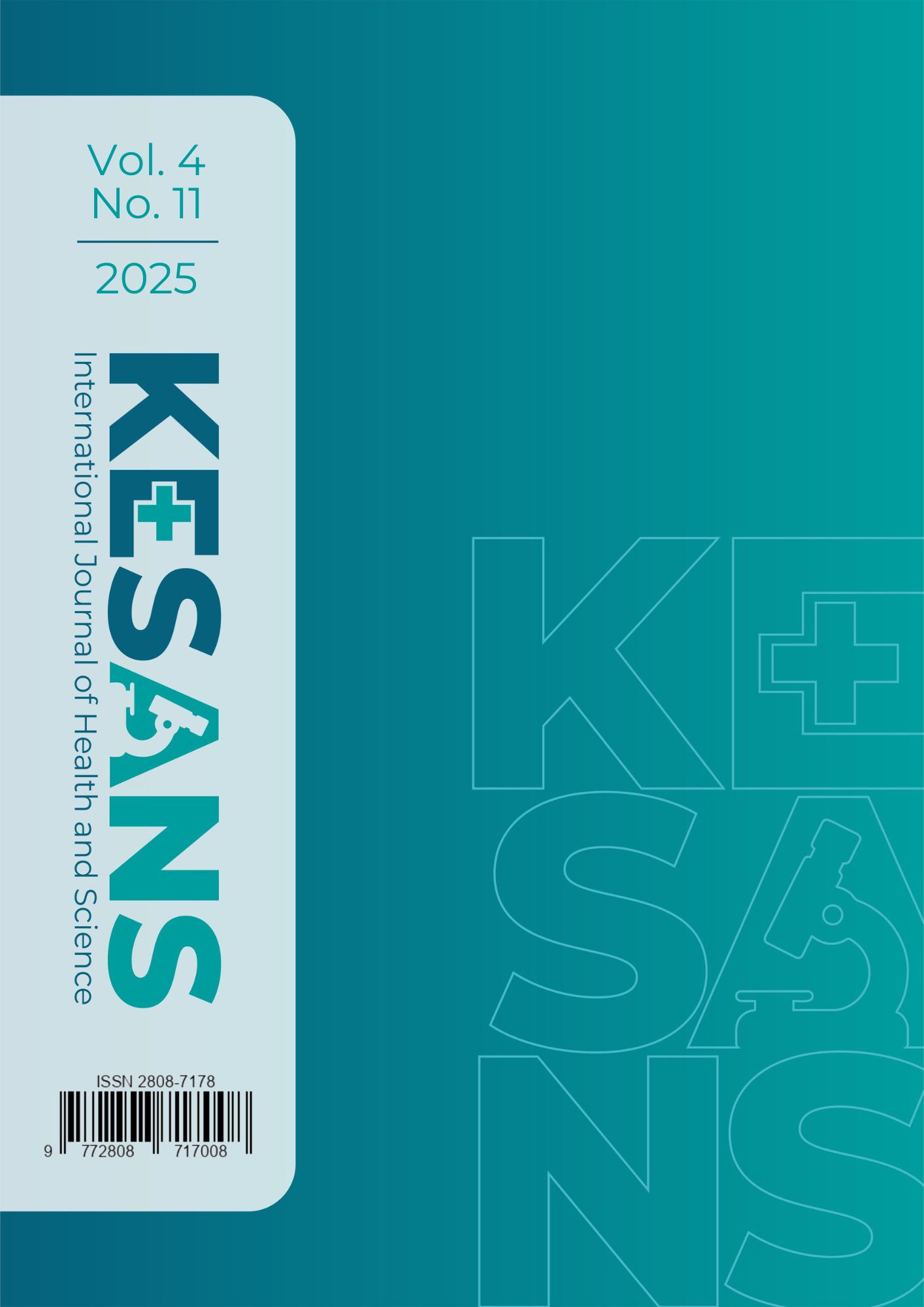Relationship Between The Severity of Preeclampsia and Oligohydramnios
DOI:
https://doi.org/10.54543/kesans.v4i11.418Keywords:
Oligohydramnios, Preeclampsia, Maternal ComplicationsAbstract
Introduction: Preeclampsia is a pregnancy complication characterized by hypertension and organ dysfunction after 20 weeks of gestation, often associated with adverse maternal and fetal outcomes, including oligohydramnios. Objective: This study aims to analyze the relationship between the severity of preeclampsia and the occurrence of oligohydramnios. Methods: An analytical observational study with a cross-sectional approach was conducted using medical records of 105 preeclamptic patients at Dr. Soetomo General Hospital, Surabaya, in 2023. The severity of preeclampsia was the independent variable, and oligohydramnios was the dependent variable. Data were analyzed using the Fisher Exact test. Result and Discussion: The study sample consisted of a relatively balanced proportion of preeclampsia without severe features (50.5%) and preeclampsia with severe features (49.5%). Only 5.7% of pregnant women with preeclampsia experienced oligohydramnios. There was no significant association between the severity of preeclampsia and oligohydramnios (p=0.981). The findings showed an equal distribution of oligohydramnios cases across both groups. Conclusion: The severity of preeclampsia is not associated with oligohydramnios. However, these findings indicate that oligohydramnios can occur not only in cases of preeclampsia with severe features but also in those without severe features. Placental insufficiency leads to decreased uteroplacental blood flow.
Downloads
Published
How to Cite
Issue
Section
Citation Check
License
Copyright (c) 2025 Andriyanti Andriyanti, Bianca Bunga Cinta Dewi, Ashon Sa'adi

This work is licensed under a Creative Commons Attribution-ShareAlike 4.0 International License.





















